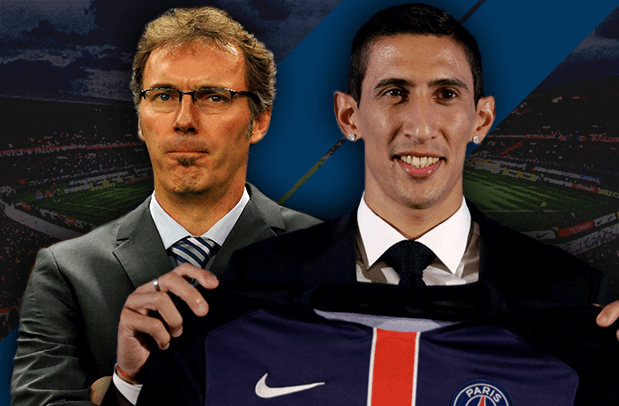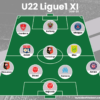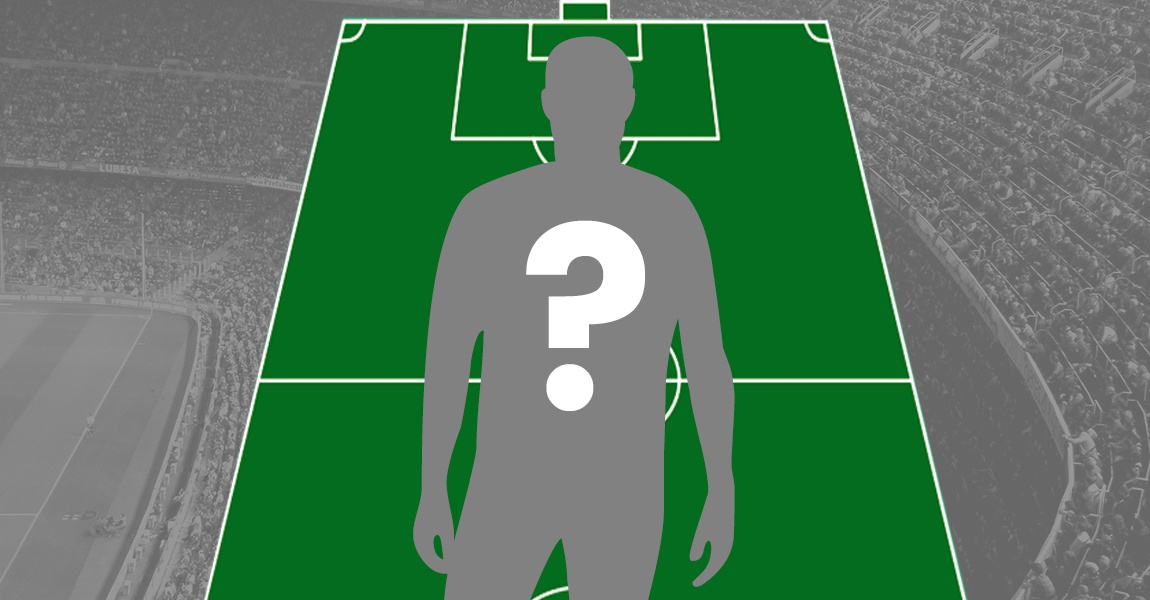There’s been plenty of buzz around Angel Di Maria’s move, as you’d expect from such a high profile transfer. The most important question though is what role he’ll be given in Laurent Blanc’s team. Advik Sanyal has a look at the alternatives.
After courting him for two long summers, PSG have finally got their man: the dynamic and mercurial Argentinian playmaker Angel Di Maria, for a relatively reasonable sum of £44.3 million to boot. The manager Laurent Blanc is ecstatic (who wouldn’t be?) and has claimed that their new signing will be “one of the most important players” for Les Parisiens. So this begs the question: how exactly will Angel Di Maria fit in at PSG?
The 4-3-3
PSG manager Laurent Blanc has repeatedly said in his interviews that this is his preferred formation, giving indications that he wishes his side to follow the possession-based Barca blueprint – although not entirely – as you shall soon discover.

In this system, the three-man midfield generally comprises of three unique roles: the pure, defensive midfielder who is adept at breaking up play (taken up by either Adrien Rabiot or Thiago Motta) the passer who dictates the tempo of the game and orchestrates the team’s attacks (normally performed by the young, exceptional talent Marco Verratti) and finally, the runner, who is an all-action midfielder that drives the team forward (usually the France international Blaise Matuidi). Since Thiago Motta has handed in a transfer request and looks certain to leave, and the raw, rash Rabiot leaves a lot to be desired, this is one spot where Di Maria could prove handy, albeit in a hybrid role. The system would then look something like this. Verratti would be asked to act as the defensive screen- thus taking up Motta’s position- while at the same time dictating play from the deep and starting his team’s attacks. Matuidi would only have a slight tweak to his task, remaining the energetic box-to-box midfielder that he is, but focusing a tad more on defensive duties. Lastly, Di Maria would act as the advanced attacking midfielder-linking PSG’s attack and midfield- in a position strikingly similar to the one he filled with distinction at Real Madrid. The Argentine would typically burst forward from midfield carrying the ball out and leading counter-attacks, spray the ball out wide to spread the play, and look to find the runs of Edinson Cavani and Zlatan Ibrahimovic with defence-splitting balls.
Alternatively, Mr. Blanc could decide to deploy the former Manchester United man further forward, as one of the wingers. In fact, in a recent press conference, Blanc hinted at using Di Maria in the right-wing berth, thus making the most of his qualities. Here, the £44 million signing would not have to track back, instead having the freedom to run at opposition defenders and drag the defence out of shape, thus allowing the likes of Matuidi, Cavani and Ibrahimovic to run into space. He would be given the license to go out wide and stretch play, either sprinting to the by-line and pinging delightful crosses into the box or cutting inside to devastating effect: using his peach of a left foot to shoot at goal or split the defence open with a sumptuous through ball. The other option would be to play Di Maria on the opposite flank, but the issue with this tactic is that it would significantly reduce his effectiveness and impact on the game.
The 4-3-1-2
In the second half of last season, Blanc decided to address PSG’s lack of dominance in games, employing a subtle tactical tweak to get the best out of stylish playmaker Javier Pastore in the coveted No. 10 role. This resulted in a switch to the 4-3-1-2. Here, Pastore was allowed to play in behind the deadly front duo of Cavani and Ibrahimovic, pulling the strings in midfield and dictating his team’s attacking play. Every PSG attack involved this man, who often supplied the killer, final ball to unlock defences. He used his supreme vision and tactical nous to perfection, earning the plaudits of fans and journalists alike. At last, the Argentinian was fulfilling his potential, justifying the faith and patience his team put in him. The ‘real’ Javier Pastore had finally emerged and this time, he meant business!
But what could Di Maria’s arrival mean for the Argentinian? There have been suggestions from the PSG boss that Di Maria has been brought in to replace Pastore in the iconic trequartista role, especially since the latter is often frustratingly inconsistent. This position would do Di Maria just fine as he would be able to utilise his supreme creativity, intelligent movement and renowned shooting ability to perfection. In short, this is a match made in heaven!
To conclude, Angel Di Maria has been brought in to the PSG squad by Blanc as a sure starter who would occupy one of the team’s widely-contested attacking positions. Whether that is in the No. 10 role, the three-man midfield, as a conventional wide man or even as an inverted winger remains to be seen!
Written by Advik Sanyal
- Analysis: Where will Angel Di Maria fit in at PSG? - August 28, 2015




























































